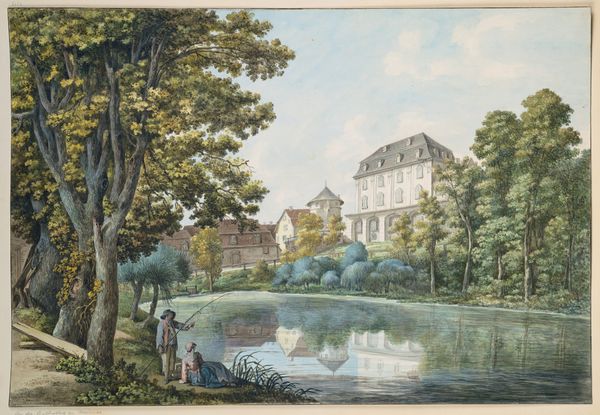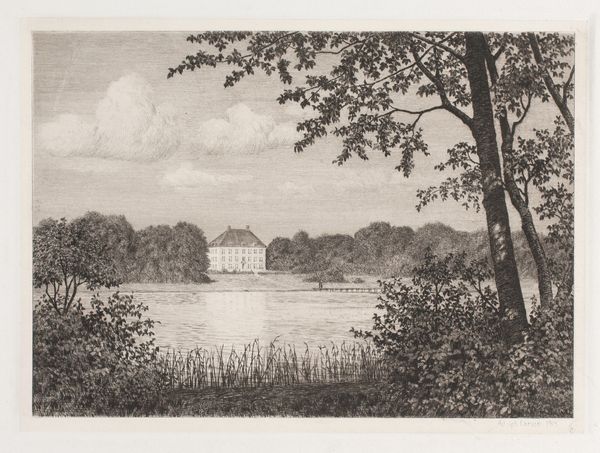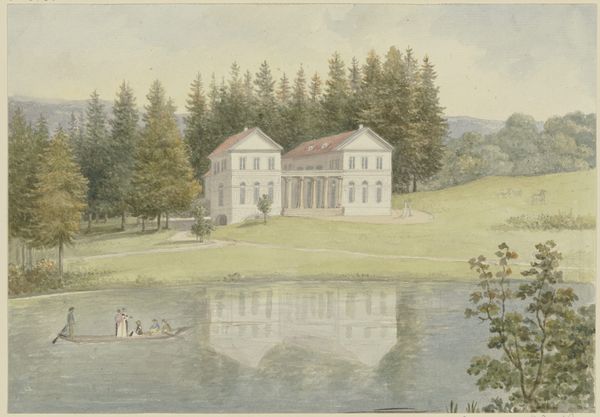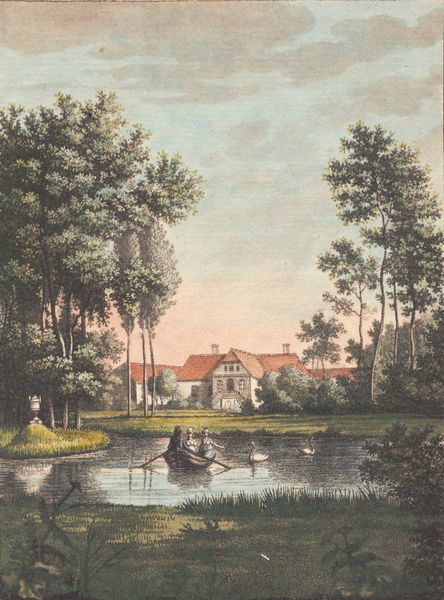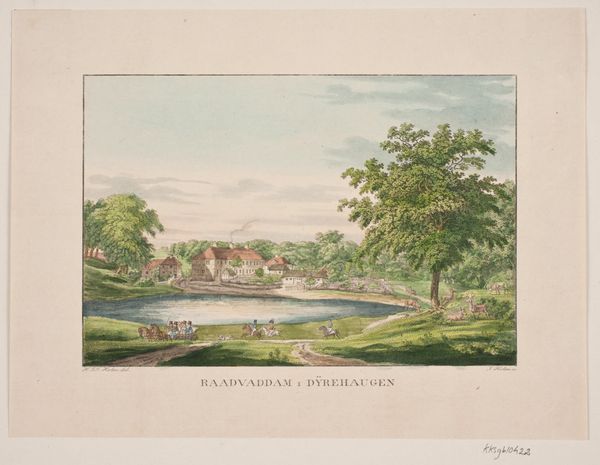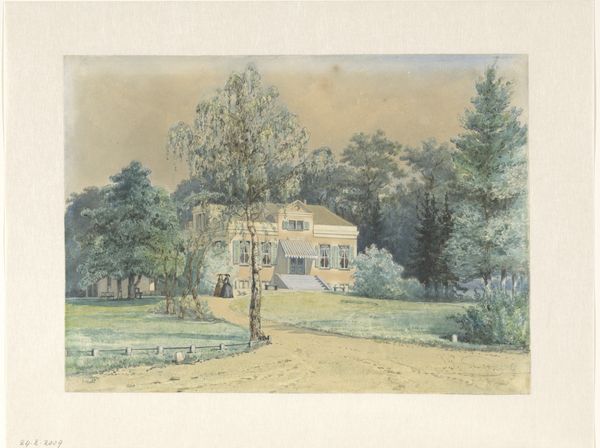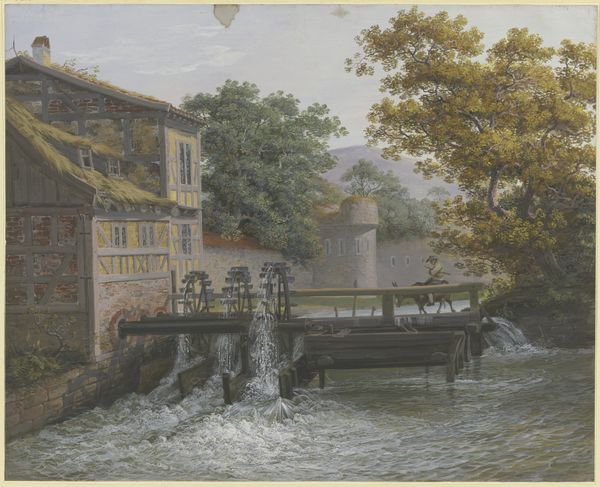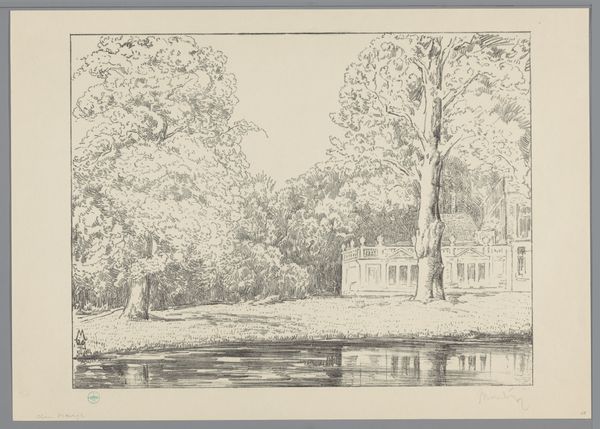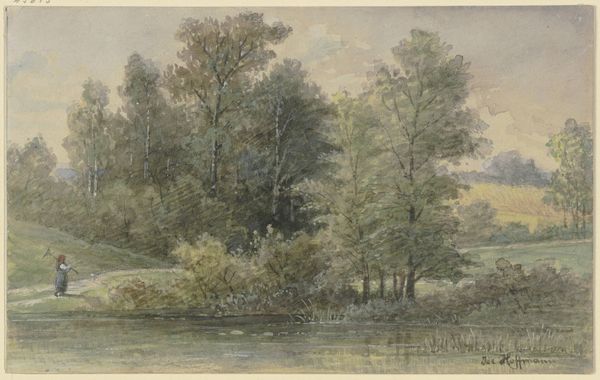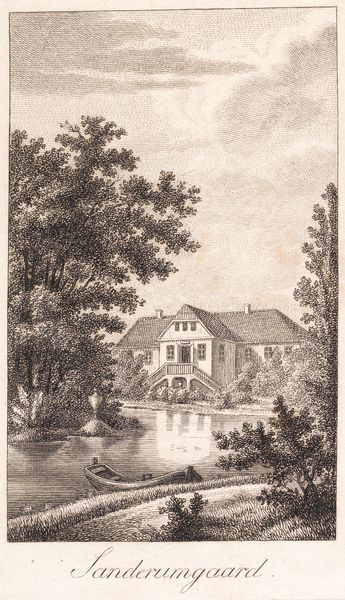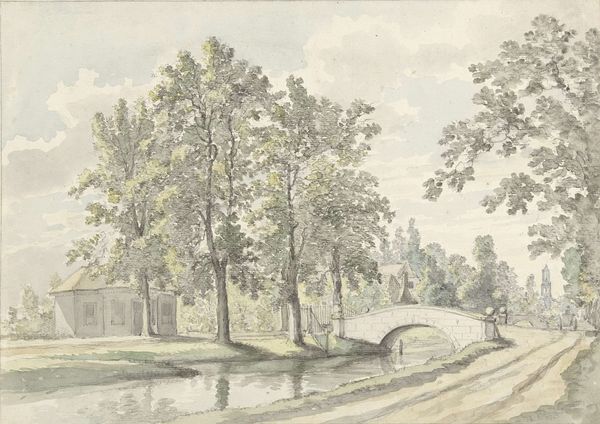
drawing, painting, watercolor, chalk, architecture
#
drawing
#
painting
#
landscape
#
watercolor
#
coloured pencil
#
romanticism
#
chalk
#
watercolor
#
architecture
Copyright: Public Domain
Curator: Here we see Georg Melchior Kraus’s “Das Waldhaus in Wilhelmstal bei Eisenach,” likely created between 1800 and 1806, utilizing watercolor, chalk, and colored pencil on paper. Editor: It’s bathed in this lovely, almost ethereal light, isn’t it? The subdued palette lends a dreamlike quality to the composition. Curator: Absolutely. The Waldhaus itself, a symbol of Enlightenment rationalism perhaps, sits poised above the landscape, reflected in the water, indicating humanity’s place within—yet slightly separate from—the natural world. Editor: The reflections in the water certainly double the impact of form, but it also fractures it slightly, disrupting the solidity. It creates an interesting visual tension. The horizontality and simple symmetry are very satisfying. Curator: Interesting observation. Symbolically, water often represents the subconscious or the spiritual realm, mirroring our physical reality yet distorting it, suggesting deeper, unseen truths. Romanticism certainly valued subjective and sometimes subconscious or emotional truths. Editor: Precisely! I’m intrigued by the composition itself—the placement of the building slightly off-center, the framing by trees on either side. There’s a dynamic interplay between the architectural forms and the organic, flowing lines of nature. And all are clearly and efficiently placed in support of each other. Curator: And, think, the forest as a site of initiation and transformation – that archetypal Romantic return to the wild! It asks what happens to people's hearts, beliefs and social connections within that setting. How are norms negotiated when people are under that kind of shelter? Editor: Right! This isn’t simply a picture, but rather a meticulously structured experience with a clear visual hierarchy—guiding the viewer's eye and evoking contemplation. It’s a testament to Kraus' control over the medium. Curator: A synthesis of order and feeling that reveals just how powerful seemingly “quiet” symbols of both nature and culture can be when interwoven. Editor: Yes, and the formal harmony of shapes and colors contribute to the pervasive sense of serene beauty. Curator: It leaves me pondering humanity's role as both an observer and an integral part of the natural order.
Comments
No comments
Be the first to comment and join the conversation on the ultimate creative platform.

